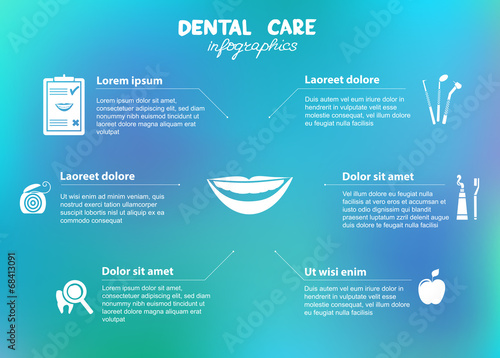Welcome to the globe of oral surgery, where technologies and advances are shaping the future of the area! In https://www.prnewswire.com/news-releases/global-teeth-whitening-market-was-valued-at-us-6-6-bn-in-2022-and-is-expected-to-reach-a-revenue-of-us-10-7-bn-between-forecast-period-of-2022-32--data-analysis-by-future-market-insights-inc-301668858.html , you'll witness the transformative power of robotics, the advanced wonder of 3D printing, and the game-changing impact of minimally invasive strategies.
The future of dental surgery holds a promise of precision, effectiveness, and enhanced patient results. With the help of advanced robotics, specialists have the ability to do complicated treatments with better precision and control.
3D printing modern technology is revolutionizing the development of dental implants and prosthetics, using personalized services that fit perfectly into each patient's unique composition.
Furthermore, minimally intrusive methods are reducing post-operative pain and healing time, allowing patients to go back to their daily lives quicker.
Prepare to explore the amazing innovations and breakthroughs that are reshaping the landscape of oral surgery!
Innovations in Robotics
One significant innovation in oral surgery is the use of robot innovation, which permits accurate and reliable operations. With the help of robotic systems, oral specialists have the capacity to perform complicated surgical treatments with boosted accuracy, lessening the threat of human error.
These robot systems are equipped with advanced imaging technology and precise tools that enable surgeons to navigate through intricate anatomical structures easily. By making Learn Even more Here of robotic technology, surgeons can achieve higher surgical precision, causing improved client end results and faster recovery times.
On top of that, the use of robotics in dental surgery enables minimally invasive procedures, minimizing the trauma to bordering cells and promoting faster recovery.
3D Printing in Dental Surgery
To improve the area of oral surgery, you can explore the subtopic of 3D printing in oral surgery. This innovative technology has the possible to transform the method oral doctors run and deal with people. Below are four crucial ways in which 3D printing is forming the area:
- ** Personalized Surgical Guides **: 3D printing enables the production of highly precise and patient-specific surgical overviews, improving the precision and performance of procedures.
- ** Implant Prosthetics **: With 3D printing, oral doctors can produce tailored dental implant prosthetics that completely fit an individual's unique makeup, leading to much better end results and client satisfaction.
- ** Bone Grafting **: 3D printing enables the production of patient-specific bone grafts, decreasing the demand for conventional grafting methods and improving healing and healing time.
- ** Education and learning and Educating **: 3D printing can be utilized to create realistic medical models for educational purposes, permitting dental specialists to practice complex procedures prior to performing them on individuals.
With its possible to improve accuracy, customization, and training, 3D printing is an interesting advancement in the field of oral surgery.
Minimally Intrusive Methods
To better progress the area of dental surgery, accept the possibility of minimally invasive strategies that can greatly benefit both doctors and people alike.
Minimally intrusive techniques are reinventing the area by lowering medical injury, decreasing post-operative discomfort, and speeding up the healing process. These methods entail utilizing smaller sized incisions and specialized instruments to do treatments with precision and efficiency.
By using innovative imaging modern technology, such as cone beam of light computed tomography (CBCT), cosmetic surgeons can properly intend and implement surgical procedures with very little invasiveness.
Additionally, using discover here in dental surgery allows for accurate cells cutting and coagulation, causing reduced blood loss and decreased recovery time.
With minimally invasive strategies, patients can experience much faster healing, lowered scarring, and boosted end results, making it an essential facet of the future of dental surgery.
Conclusion
So, as you can see, the future of dental surgery is extremely encouraging, with exciting technologies and breakthroughs shaping the field.
From the innovations in robotics to the use of 3D printing and minimally intrusive techniques, oral doctors are reinventing the way they give care.
While some might stress over the prospective price related to these innovations, it's important to keep in mind that these technologies ultimately enhance person results and reduce healing time, making them well worth the financial investment in the long run.
